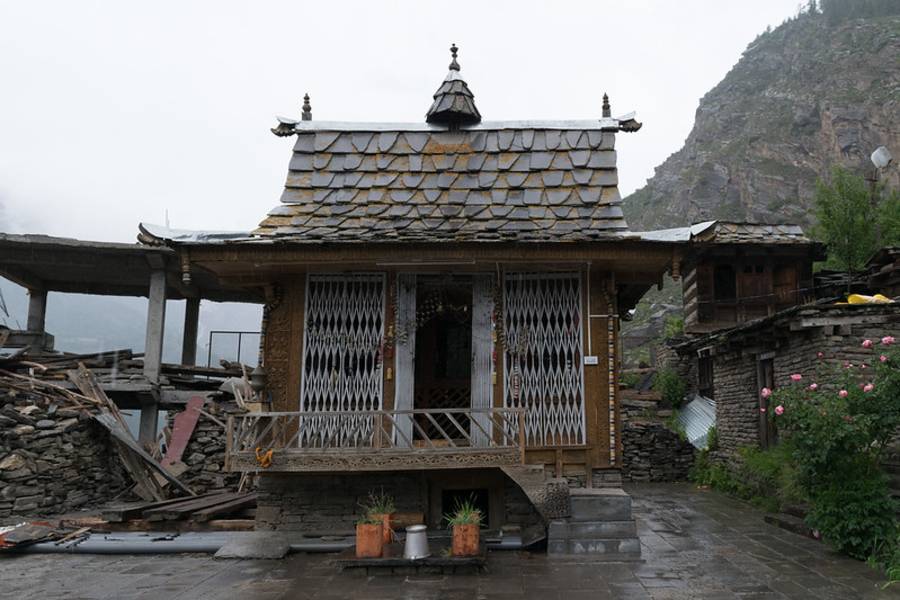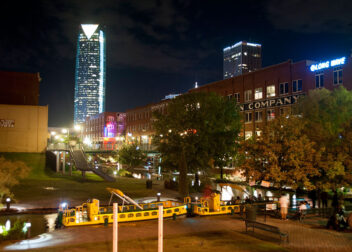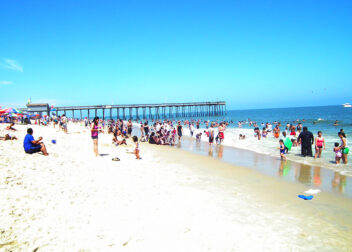Kamru Fort
Kamru Fort is a historical fort located in the Sangla Valley of the Kinnaur district in the state of Himachal Pradesh, India. It is situated at an altitude of 2600 meters above sea level and is about 2 kilometers away from the town of Sangla.
The fort is believed to have been built in the 15th century by the rulers of the former Bushahr State. It served as the residence of the rulers of the Kinnaur region for many years before the capital was shifted to Sarahan.
The Kamru Fort is a five-story wooden structure that has been beautifully crafted and painted in the traditional Kinnauri style. The fort is adorned with intricate carvings and colorful paintings that depict the rich culture and history of the region. The top floor of the fort houses a temple dedicated to the main deity of the region, Kamakhya Devi.
Visitors to the Kamru Fort can enjoy panoramic views of the surrounding mountains and valleys from the top of the fort. The fort is also a popular starting point for many treks in the Sangla Valley, and visitors can explore the beautiful landscape of the region on foot.
Overall, Kamru Fort is a must-visit destination for history buffs, architecture enthusiasts, and nature lovers visiting the Kinnaur district of Himachal Pradesh.
History
Kamru Fort is believed to have been built in the 15th century by the rulers of the former Bushahr State, who were a part of the Kinnaur region. The fort was built as a residence for the rulers of the region and served as a symbol of their power and authority.
Over the years, the fort underwent several renovations and expansions, with each ruler adding their own touches to the structure. The fort was also used as a religious center, and a temple dedicated to Kamakhya Devi, the main deity of the region, was added to the top floor of the fort.
During the British colonial era, the fort was used as a military outpost and a base for the local police force. In the mid-20th century, the capital of the Kinnaur region was shifted to Sarahan, and the fort lost its importance as a center of power.
Today, Kamru Fort is a popular tourist destination, attracting visitors from around the world who come to admire the fort’s beautiful architecture and learn about the rich history and culture of the Kinnaur region.
Activity on Kamru Fort
Visitors to Kamru Fort can enjoy a variety of activities during their visit. Here are some of the most popular activities:
Explore the Fort:
One of the main activities at Kamru Fort is to explore the fort itself. Visitors can climb the five stories of the fort, admire the intricate carvings and colorful paintings, and learn about the history and culture of the Kinnaur region. The temple dedicated to Kamakhya Devi on the top floor is also a popular attraction.
Trekking:
Kamru Fort is a popular starting point for many treks in the Sangla Valley. Visitors can take a guided trek through the beautiful Himalayan landscape, which includes stunning views of snow-capped mountains, lush forests, and picturesque villages. Some popular treks include the Sangla Kanda Trek and the Bapsa River Trek.
Village Walks:
Visitors can take a walk through the nearby villages and experience the local culture and way of life. The villages around Kamru Fort are known for their traditional architecture, friendly people, and vibrant festivals.
Photography:
Kamru Fort is a photographer’s paradise. The beautiful architecture, stunning views, and colorful culture of the Kinnaur region provide endless opportunities for capturing breathtaking photos.
Shopping:
Visitors can shop for souvenirs and local handicrafts at the nearby Sangla Bazaar. The market is known for its unique Kinnauri shawls, jewelry, and other traditional items.
Camping:
Visitors can set up camp in the beautiful surroundings of Kamru Fort. There are several campsites around the fort that offer a unique camping experience in the midst of nature.
Overall, Kamru Fort offers a range of activities that cater to a variety of interests and preferences. Whether you’re a history buff, nature lover, or adventure seeker, there’s something for everyone at Kamru Fort.
Architecture
Kamru Fort is an excellent example of traditional Kinnauri architecture. The fort is a five-story wooden structure, with each floor serving a different purpose. The ground floor was used as a storehouse for grains and other supplies, while the upper floors were used as living quarters for the rulers and their families.
The fort is adorned with intricate carvings and colorful paintings that depict the rich culture and history of the region. The carvings are mostly floral and geometric patterns, and they are a testament to the skill of the local craftsmen. The colorful paintings on the walls and ceilings of the fort depict scenes from Hindu mythology and local folklore, and they are a feast for the eyes.
The temple dedicated to Kamakhya Devi, the main deity of the region, is located on the top floor of the fort. The temple is a small but beautifully decorated space, with intricate carvings and paintings on the walls and ceilings.
The most striking feature of Kamru Fort is its sloping roofs, which are a hallmark of Kinnauri architecture. The roofs are made of wooden planks that are laid over a framework of wooden beams. The roof’s slope allows for snow and rain to slide off easily, which is essential in the snowy Himalayan region.
Overall, Kamru Fort’s architecture is a testament to the ingenuity and creativity of the local people. The fort’s traditional Kinnauri style and intricate carvings and paintings make it a must-visit destination for architecture enthusiasts and anyone interested in the rich cultural heritage of the Kinnaur region.
How to reach
Kamru Fort is located in the Sangla Valley in the Kinnaur district of Himachal Pradesh, India. Here are some ways to reach Kamru Fort:
- By Air: The nearest airport to Kamru Fort is the Jubbarhatti Airport in Shimla, which is about 240 km away. From the airport, visitors can take a taxi or bus to reach Kamru Fort.
- By Train: The nearest railway station to Kamru Fort is the Shimla Railway Station, which is about 230 km away. From the railway station, visitors can take a taxi or bus to reach Kamru Fort.
- By Road: Kamru Fort is well-connected by road to major cities in Himachal Pradesh and nearby states. The nearest town to Kamru Fort is Sangla, which is about 2 km away. From Sangla, visitors can hire a taxi or take a local bus to reach Kamru Fort. Private taxis can also be hired from Shimla or Chandigarh.
It is important to note that the roads leading to Kamru Fort are narrow and winding, and can be challenging for inexperienced drivers. It is recommended to hire a local driver or take a bus to reach Kamru Fort.
Where to Stay
There are several options for accommodation near Kamru Fort. Here are some of the most popular options:
- Homestays: There are several homestays in the nearby villages that offer a unique cultural experience. These homestays are run by local families and offer comfortable rooms, home-cooked meals, and an opportunity to experience the local way of life.
- Guesthouses: There are several guesthouses in the nearby town of Sangla that offer basic but comfortable rooms. These guesthouses are usually run by local families and offer a warm and welcoming atmosphere.
- Luxury Resorts: There are a few luxury resorts in the Sangla Valley that offer comfortable rooms, modern amenities, and stunning views of the Himalayas. These resorts are a great option for visitors who want to relax and unwind in a peaceful and serene environment.
- Camping: Visitors can also opt for camping near Kamru Fort. There are several campsites around the fort that offer a unique camping experience in the midst of nature.
It is recommended to book your accommodation in advance, especially during the peak tourist season (April to June and September to November). Some popular accommodation options include Hotel Rupin River View, The Royal Castle Resort, and Banjara Camps & Retreats.
Best time to visit
The best time to visit Kamru Fort is during the months of April to June and September to November, which are the spring and autumn seasons in the Kinnaur region. During these months, the weather is pleasant, and the skies are usually clear, providing excellent views of the surrounding mountains.
During the spring season, the hills are covered with blooming flowers, making it a perfect time for nature lovers to visit. Autumn, on the other hand, offers clear views of the Himalayas, making it a great time for trekking and sightseeing.
The monsoon season (July to August) is not a good time to visit Kamru Fort as the region receives heavy rainfall, which can lead to landslides and roadblocks. During the winter season (December to February), the region is covered with snow, and the temperature drops below freezing, making it unsuitable for travel.
In summary, the best time to visit Kamru Fort is during the spring and autumn seasons (April to June and September to November), when the weather is pleasant and the skies are clear.
Nearby attraction with km
There are several nearby attractions that visitors can explore while visiting Kamru Fort. Here are some popular attractions with their distance in kilometers (km) from Kamru Fort:
- Sangla Valley – 2 km
- Chitkul – 22 km
- Rakcham – 13 km
- Nako Lake – 111 km
- Kalpa – 50 km
- Reckong Peo – 68 km
- Kinner Kailash – 75 km
- Baspa River – 5 km
- Bering Nag Temple – 1 km
- Sapni Fort – 8 km
Sangla Valley is the closest and most popular attraction, known for its scenic beauty and apple orchards. Chitkul is a picturesque village located at the Indo-Tibetan border and is famous for its traditional Kinnauri architecture. Rakcham is a scenic hamlet located on the banks of the Baspa River and is an ideal place for nature walks and bird watching.
Nako Lake is a high altitude lake located at an elevation of 3,662 meters, surrounded by snow-capped mountains. Kalpa is a small town located in the Kinnaur district and is known for its apple orchards and traditional Kinnauri architecture. Reckong Peo is the administrative headquarters of the Kinnaur district and is known for its scenic beauty and traditional temples.
Kinner Kailash is a mountain peak located in the Kinnaur district and is considered sacred by Hindus and Buddhists. Baspa River is a beautiful river that flows through the Sangla Valley, offering stunning views and opportunities for angling and river rafting. Bering Nag Temple is a famous temple located in the village of Bering Nag, known for its unique wooden carvings. Sapni Fort is a small fort located near Sangla, known for its historic significance and beautiful architecture.



